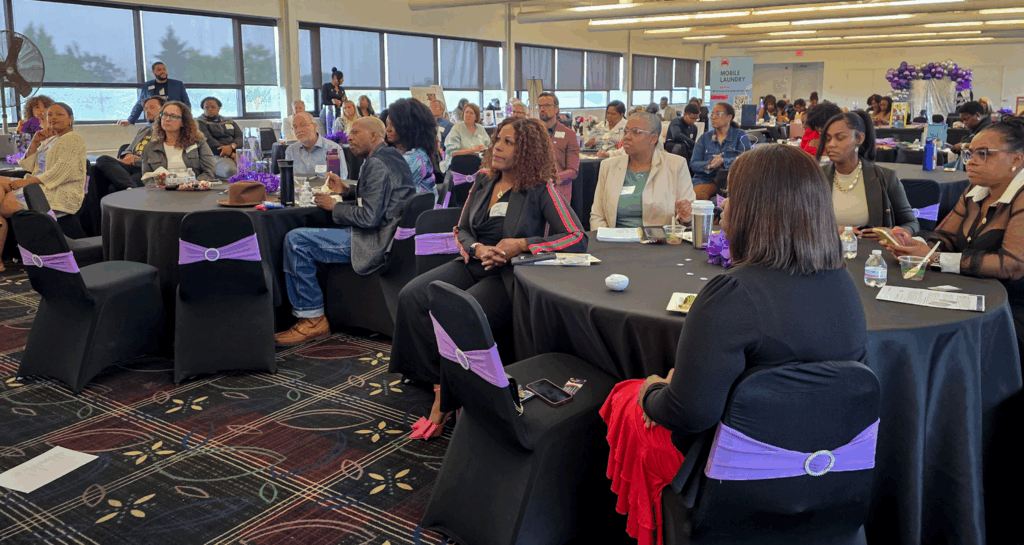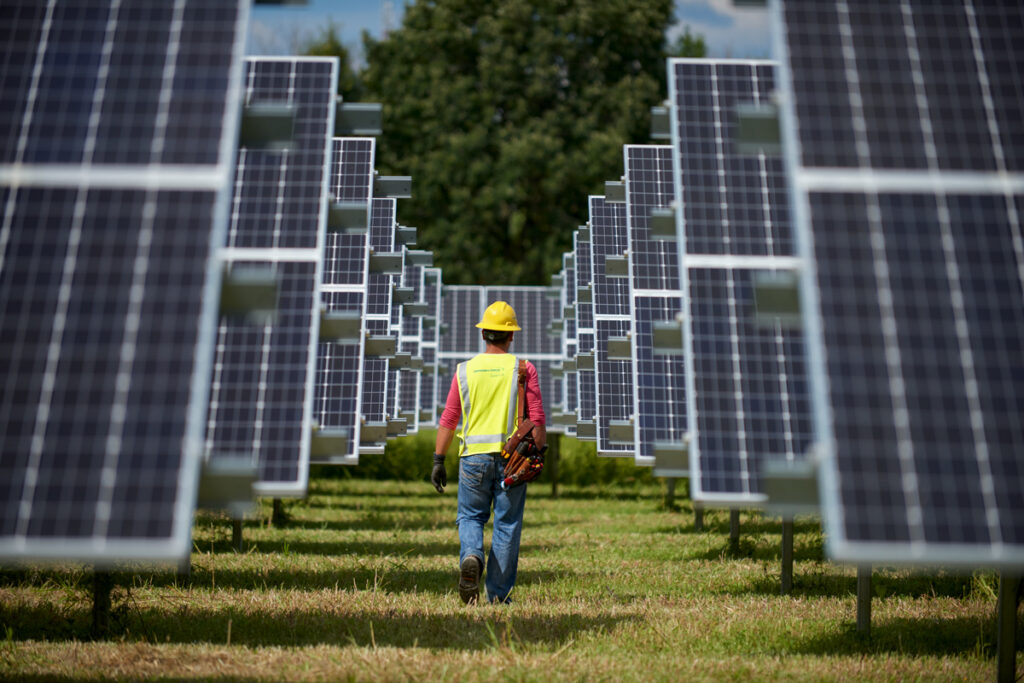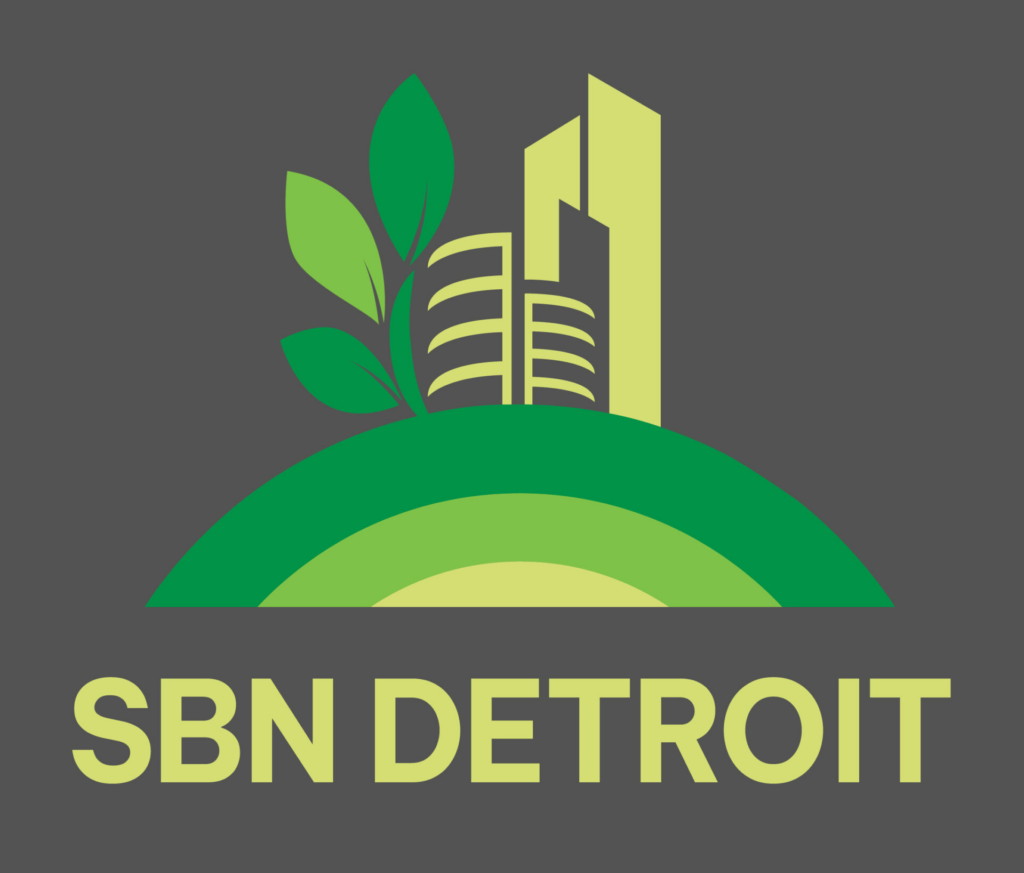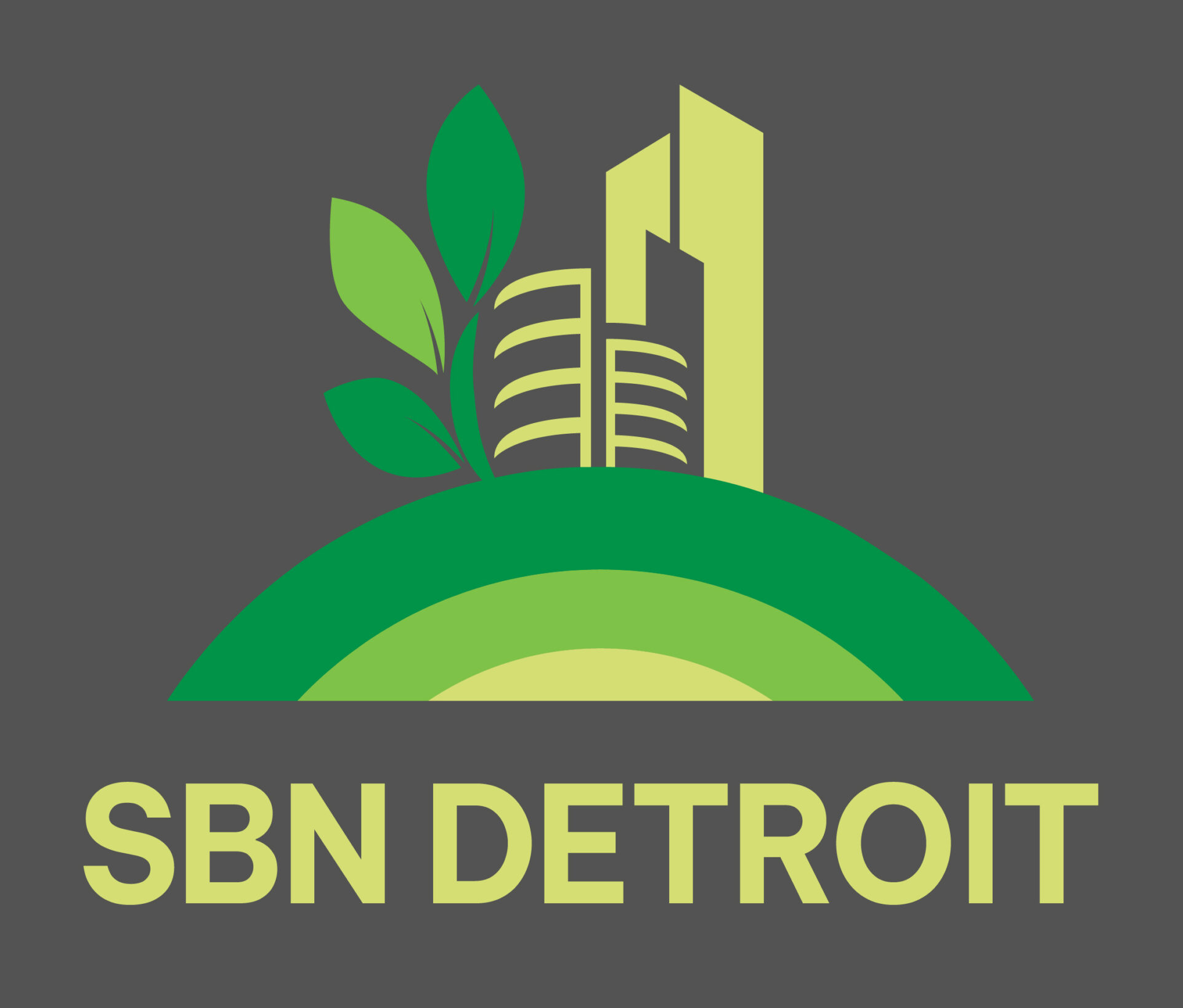Building a People-First Economy in Michigan

People First Economy is a statewide organization working to redefine what success in business looks like—where profitability, community wellbeing, and environmental stewardship go hand in hand. Through education, measurement tools, and peer networks, the nonprofit helps Michigan businesses integrate social and environmental values into everyday operations. SBN Detroit interviewed Carlos Martinez, president of People First Economy, about shifting business mindsets, the growing connection between sustainability and profitability, and why Michigan is uniquely positioned to lead the next economy. Q: Tell me about People First Economy and how it came to be. A: At its core, People First Economy is about building tools and support networks that help shape an economy where people and environmental well-being are essential. We never shy away from the idea of the triple bottom line — businesses can absolutely make a healthy profit while supporting the communities they serve and the environment they depend on. We now serve more than 500 businesses statewide, from early-stage entrepreneurs to established companies. Much of our work centers on education and foundational business practices, but always through the lens of sustainability and inclusion. We started as Local First, which focused on supporting locally owned companies. Over time, our mission expanded to include environmental and social impact — because local economies thrive when businesses are sustainable, equitable, and community-driven. Q: As you work with cohorts, what mindset shifts do you see as companies move toward more inclusive, sustainable practices? A: The biggest shift happens when leaders stop viewing sustainability as an add-on and start seeing it as core to their business strategy. Once companies begin measuring their social and environmental impact, they start acting more proactively. Sustainability becomes part of how they innovate, manage costs, and create value. For larger or more mature businesses, this often leads to a broader cultural shift. They begin evaluating suppliers, employees, and even competitors differently — not as transactions, but as part of a shared ecosystem. That mindset unlocks collaboration and innovation. When companies realize that solving sustainability challenges can actually drive profitability, real transformation begins. Q: What tangible benefits do companies see when they measure their social and environmental impacts? A: One of the biggest is employee engagement. When people see that their company is making a positive difference, they feel connected to something larger than their job. We also see efficiency gains, cost savings from smarter resource management, and stronger brand loyalty. But there’s another layer — storytelling. When businesses can measure their impact, they can share those results in powerful ways. It becomes part of their identity. For example, Walker-Miller Energy Services and Cascade Engineering in Michigan both demonstrate how sustainability and inclusion strengthen brand reputation and build employee pride. More companies are now including impact reporting in their marketing or RFP materials because it helps them stand out. When you can prove your values, you open doors to new opportunities. A Harvard study recently found that purpose-driven companies embedding sustainability into their culture outperform the market nearly tenfold over two decades. That connection between purpose and profit is real. The business impact strategies create lasting value when they’re grounded in a deep understanding of a company’s financial metrics. Q: How do you encourage businesses to think about long-term value rather than short-term profit? A: This is always an evolving conversation, especially in challenging economic times. The key is understanding that we’re all interconnected. A diverse, resilient business community helps protect against national downturns and future disruptions. Companies that invest early in sustainable, innovative practices often find themselves better positioned when the market shifts. Patagonia is a good example — years ago, they were experimenting with regenerative agriculture, which at the time seemed niche. Today, it’s a standard for sustainable production. When you build trust, brand loyalty, and local supply chains, it creates stability. Over the long term, that stability translates to profitability. Q: Detroit and Michigan have a rich manufacturing legacy. How is the people-first model reshaping the regional narrative around business and jobs? A: Detroit is unique because it already has a strong foundation of community-based leadership. Other states look to Detroit as a model for what’s possible when innovation and inclusion go hand in hand. We’re still early in the process of embedding this mindset more broadly, but the momentum is there. When we opened applications for our latest sustainability cohort, we had more than 50 applicants for just 20 spots — which tells us there’s real appetite for this work. Our broader goals include connecting early-stage businesses with those further along in their sustainability journey — through tools, mentorship, and experiences like conferences where they can see what’s possible. It’s about building a community of practice. The more we connect those dots, the stronger our local economy becomes. Q: If you were advising a mid-size company in Detroit today, what’s the best first step toward embedding people-first practices? A: Start by understanding where you are. We always recommend beginning with a sustainability or impact assessment. Then pick one or two achievable goals, such as improving employee benefits, reducing waste, or sourcing locally. Progress happens through small, transparent steps, not perfection. I’m an entrepreneur myself, and when I first took an assessment myself, I panicked — but that’s the point. It’s about identifying opportunities for improvement, not judgment. Once you see where you can make a change, momentum builds. It’s a marathon, not a sprint. Q: Where do you see the biggest growth opportunities for Michigan businesses in the next five years? A: Growth lies at the intersection of sustainability, equity, and innovation. The clean energy transition alone represents a multi-trillion-dollar opportunity. There’s also growing potential in circular manufacturing and workforce development and worker-owned cooperatives. We need to make sure those opportunities are equitable. Detroit has a majority Black population, and Michigan has several key regions with strong, diverse, but underserved communities. As major investments flow into green energy and infrastructure, it’s vital that local entrepreneurs and workers share in that growth. This is still a foundational phase. Some of the biggest
Implementing Sustainability Initiatives is Crucial in Today’s Business World

CONNIE LILLEY IS THE EXECUTIVE DIRECTOR OF DETROIT 2030 DISTRICT You may be missing out on growth opportunities if you’re a business that has yet to jump on the sustainability train. I’m sure you’ve heard the word “sustainability” before, but what exactly does that mean to your business? That’s the question all individual companies need to ask. PEOPLE, PLANET, AND PROFIT The well-known triple-bottom-line theory is just one of many theories floating around today. But, the most basic question that all businesses need to ask is: How is my company benefiting People, Planet, and Profit? No matter what program, theory, or process a business intends to follow, there’s one sure thing – getting started can be the hardest part. But, if you are a company that is just getting started, it’s easier than ever to create a sustainability plan for a business. Companies no longer have to reinvent the wheel when writing a sustainability plan. Other businesses have created many programs and published sustainability plans to help lead the way and share best practices. While sustainability means different things to different organizations, there’s no denying that implementing sustainability initiatives can help a company’s growth in more ways than just environmental stewardship. While that is the main focus of sustainability, let’s not forget about the economic benefits as well. A company that reduces utility costs can put that savings into hiring more employees, spurring economic development. Sustainability plans should be a part of any business operational plans. Here are some of the benefits of getting started. SAVE MONEY ● Reduce the cost of transportation to and from landfills ● Reduce your operating expenses when you use less energy and water ● Reduce your stormwater runoff fees Reduce your company’s carbon footprint ● Lowering greenhouse gas emissions by reducing energy and water consumption ● Installing gardens or green roofs to manage stormwater runoff ● Reduce transportation emissions to and from landfills and local traffic Increase your revenue: ● Increase positive public relations and marketing by promoting your company’s sustainability efforts ● Increase sales by offering sustainable products to your customers ● Create a healthy building to attract quality tenants to increase rent ● Provide a healthy environment for employees and thereby reduce sick days The steps described above are not always easy to implement. If you own or manage a building, creating a high-performance building takes focus and commitment. Organizations such as 2030 Districts are forming across North America to assist facility managers and owners with tasks such as tracking and managing water and energy consumption, offering educational opportunities, sharing best practices, and more. Most 2030 District programs are free or cost-effective compared to hiring a consultant or company to assist. For more information and to find a 2030 District in your city, visit www.2030districts.org. Be sure to subscribe to our newsletter for regular updates on sustainable business practices in and around Detroit.
How Does Consumers Energy Activate Around People, the Planet, and Prosperity?

How does Consumers Energy, which provides natural gas and electricity to 6.7 million of Michigan’s 10 million residents, with 8,000+ staff members, approach sustainability? SBN Detroit spoke to Brandon Hofmeister, Senior Vice President of Governmental, Regulatory and Public Affairs for CMS Energy and Consumers Energy, about how the company executes its sustainability goals and about some of its current projects. Q: When did you begin sustainability efforts at Consumers Energy? A: From a very broad sense, the company has been focused on sustainability since it was founded. Our current intentional focus to prioritize sustainability specifically within our corporate strategy has been around for about a decade. Q: What is the organizational structure around executing your sustainability goals? A: Our corporate strategy is centered around a triple bottom line of people, planet, and prosperity with measurable goals that cascade down throughout the whole business and that are embedded in everything we do. We don’t necessarily source it to one department or team. We do have an Environment and Sustainability Council that includes top leaders and executives and officers who meet regularly to monitor progress toward key sustainability goals. We also have a Chief Diversity Officer and a focus on diversity, equity, and inclusion, and this overlaps and encompasses our sustainability objectives. It’s very cross-functional – everyone owns it and it’s embedded within all roles and levels of the company. Q; Please give some examples of initiatives and priorities in place around people, planet and prosperity. A: Regarding the planet, I would say our biggest initiative is transforming our electricity generation mix. We will retire our remaining coal plants in 2025 and move completely to clean energy, reducing carbon emissions by 60% from 2005 levels. This is a very aggressive goal but as a company, we are excited about it. From a people perspective, we are focused on dramatically improving electric reliability by hardening systems to stand up to more intense storm activity and leveraging best practices in technology and management to reduce outages. We are also deeply focused on the affordability of our services. We’re doing a lot of work to create payment and assistance and energy efficiency programs. We are also dedicated to finding ways to take cost out of our processes and the cost we pass on to our customers, so they get the best value for the services provided. This is equally important for our business customers. We must make sure electricity is cost-effective so businesses can continue to thrive and create jobs here in Michigan. Regarding prosperity, part of the triple bottom line is keeping our own business healthy and profitable for our staff and also our investors. We are expected to deliver consistent and low-risk financial results and that affects our community and the economy overall. Q: Consumers Energy employs more than 8,000 people. How do you share the vision and facilitate action? A: How we approach the goals in itself is important and I think has been impactful. We set breakthrough goals and unleash the team to find new and innovative solutions. It is challenging to set goals that we don’t yet know how to achieve, but this can also be very inspiring, as long as you give the “why” behind the goal. Our team inherently works for our friends and neighbors, and we want to deliver for them. So, whether it’s decreasing carbon emissions or increasing electric reliability, we set goals, give the why, and then let the power of the people take it forward. The outcomes are often quite remarkable and solutions we never thought possible are unveiled. Q: What do you think is one of the most impactful sustainability practices you’ve put into place to date? A: Our clean energy program is a good example. We set an ambitious goal to get to net zero carbon emissions by 2040. Within the framework of conventional wisdom, this originally appeared to be impossible. But the goal has opened up new ways of thinking. Retiring the coal plants was originally slated for 2040, but that’s been moved up to 2025 as I mentioned. We have a north star to reach and are working on this carbon goal every day. Q: What do you point to as an impactful project you are putting into place in the next three to five years? A: Electrification of vehicles is a big game changer for our industry. The company has a breakthrough goal to have a million EVs in service by 2030. This is great for the planet and great for our customers’ pocketbooks. The more electricity we all use, the more electric bills decrease. There are set costs for infrastructure, and if more people are using that infrastructure the cost per unit of electricity goes down. So, it’s a win-win. Q: How do you integrate the community and keep them informed? A: This is a huge part of our work. We spend a lot of time communicating what we are working on and why, but it’s a two-way street. We also want to understand the people and community we serve, so we conduct formal and informal stakeholder outreach. We do materiality assessments internally and externally. We engage customers and educate them on how they can save energy by considering an electric vehicle or participating in renewable energy programs. Most people don’t think about their utility service unless the power out goes out, but it’s important to continually communicate our broader mission. We spend time engaging in a variety of channels with customers to have two-way communication. Q: What advice would you give to SE Michigan businesses when it comes to laying out sustainability goals and achieving them? A: Start with what’s important to the business. Understand the impact the business is having and focus on a goal. Also engage stakeholders. Set ambitious goals and always communicate the why. It’s easier to bring people in when they are engaged versus being told. And finally, don’t have too many goals. Prioritize, set a few very ambitious and solid goals,


